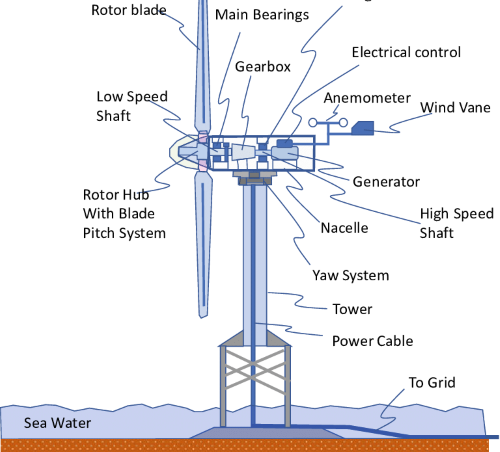History of Magnetism and Permanent Magnets
Introduction
Magnetism is a phenomenon that has been known to humans since ancient times. The ancient Greeks and Chinese were aware of the magnetic properties of certain rocks, such as magnetite, and used them for navigation and divination. This article is going to introduce the history of magnetism and permanent magnets in detail.

Figure 1. Magnets
History of Magnetism
The history of magnetism is filled with scientific research and discoveries.
--The Beginning
The history of magnetism study begins in the 17th century. In 1600, William Gilbert, an English physician and natural philosopher, published a groundbreaking book entitled "De Magnete," in which he described his experiments and observations on the properties of magnets. Gilbert coined the term "magnetism" to describe the force that magnets exerted on each other and on other materials.
--The Discovery of Electromagnetism
In the following centuries, scientists continued to study magnetism and its properties. In the 18th century, Hans Christian Oersted discovered that an electric current flowing through a wire could produce a magnetic field. This discovery laid the foundation for the study of electromagnetism, which became a key area of research in the 19th and 20th centuries.
--The Faraday Effect
One of the most important discoveries in the history of magnetism was made in the early 19th century by Michael Faraday, a British physicist, and chemist. Faraday discovered that a changing magnetic field could induce an electric current in a wire. This discovery led to the development of the dynamo, a device that converts mechanical energy into electrical energy.
History of Permanent Magnets
Among all the magnets that are studied and used, permanent magnets are of great importance and have evolved for years.
--Al-Ni-Co Magnets
AlNiCo magnets containing aluminum, nickel, and cobalt elements were discovered in the 1930s. Because of their strong magnetic power, great resistance to corrosion and high temperature of about 600°C, AlNiCo magnets took the place of electromagnets and found lots of applications including generators, motors, etc. However, AlNiCo magnets are prone to demagnetization. So, they left the market gradually. New high-tech and lower-cost magnets appeared in the history of permanent magnets consequently.
--Ferrite Magnets
The first ferrite magnet came to the world in 1952. Ferrite is mainly composed of iron oxide and strontium carbonate. Ferrite magnets are also called ceramic magnets since they have impressive electrical insulation ability. They have a good temperature tolerance of up to 250°C, lower cost, and better coercivity. Ferrite magnets are highly resistant to deterioration and corrosion as well. Therefore, such magnets quickly replaced Al-Ni-Co magnets and are employed in a range of products like electronic sensing devices and magnetic separators.

Figure 2. Ferrite Magnets
--Sm-Co Magnets
The introduction of rare earth elements into permanent magnets started in the 1960s. The mid-1960s saw the discovery of Sm-Co magnets, which are made from samarium, cobalt, and iron. These magnets have many high-temperature applications because they can stand temperatures up to 300° C. Sm-Co magnets also stand out for their magnetic strength and corrosion resistance. Yet, samarium cobalt magnets are very brittle and extremely fragile. The manufacturing cost is very expensive as well.
--Nd-Fe-B Magnets
In 1984, General Motors, Sumitomo Special Metals, and the Chinese Academy of Sciences made Nd-Fe-B magnets, which contain neodymium, iron, and boron. As the lightest, strongest, and most affordable type of rare earth magnets, Nd-Fe-B magnets are widely applied to electrical engineering, communication technology, etc. Nevertheless, they have a lower Curie temperature of 320°C, and they are rather vulnerable to oxidation. These magnetic materials might crush into powder in a corrosive environment.

Figure 3. Neodymium Magnets Related reading: Common Applications of Neodymium Magnets
Conclusion
Today, magnetism plays a critical role in a wide range of scientific and technological fields. Magnetic materials are used in everything from computer hard drives to MRI machines to particle accelerators. The study of magnetism continues to be a vibrant area of research, with scientists exploring new materials and phenomena that may have important applications in the future. There have been lots of discoveries in the history of magnetism. Many more researches and applications on permanent magnets would come out in the future. Stanford Magnets offers a variety of permanent magnets at affordable prices. Hope that you can find suitable magnets from our diverse products online. For more information, please check our homepage.















